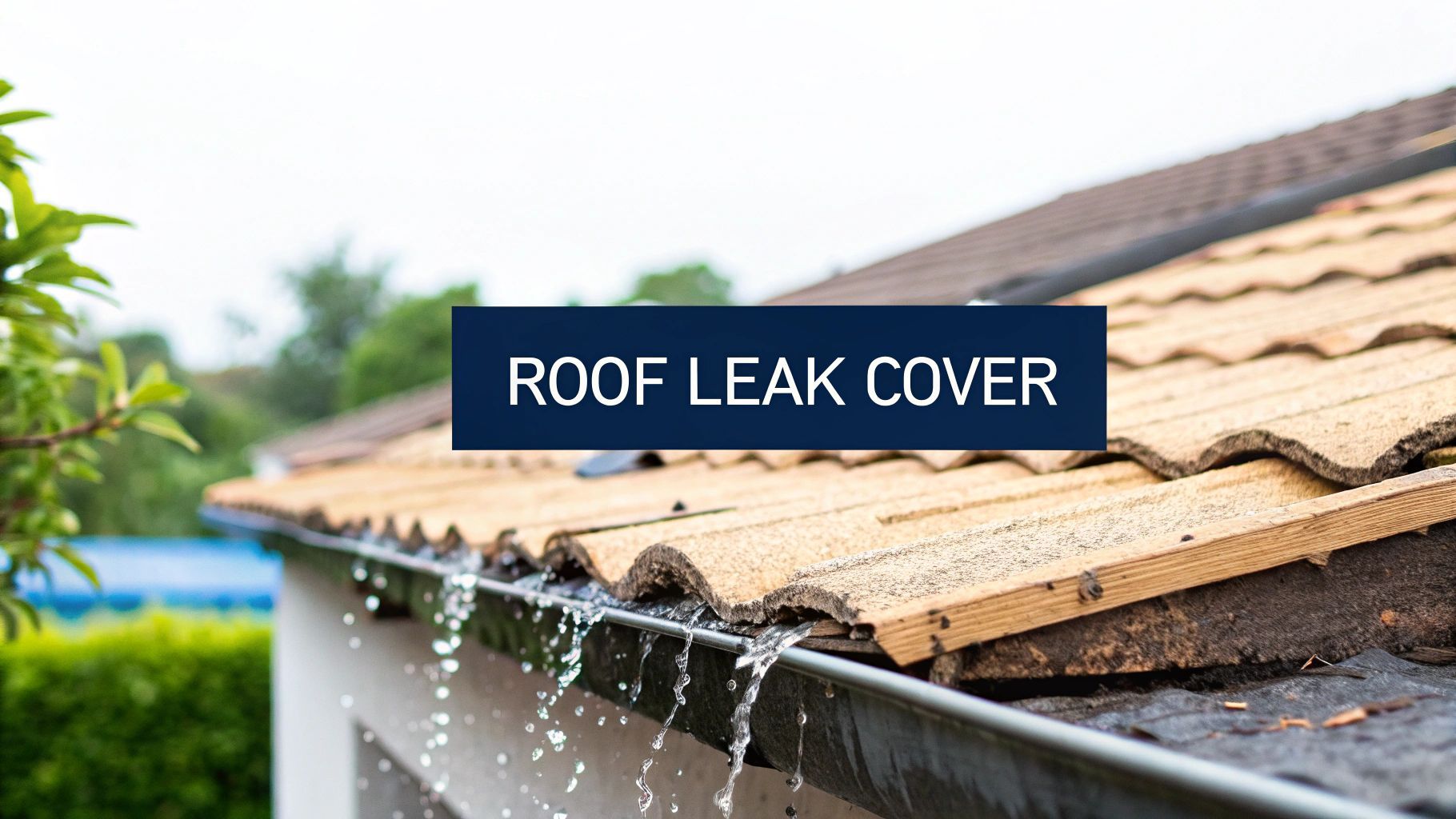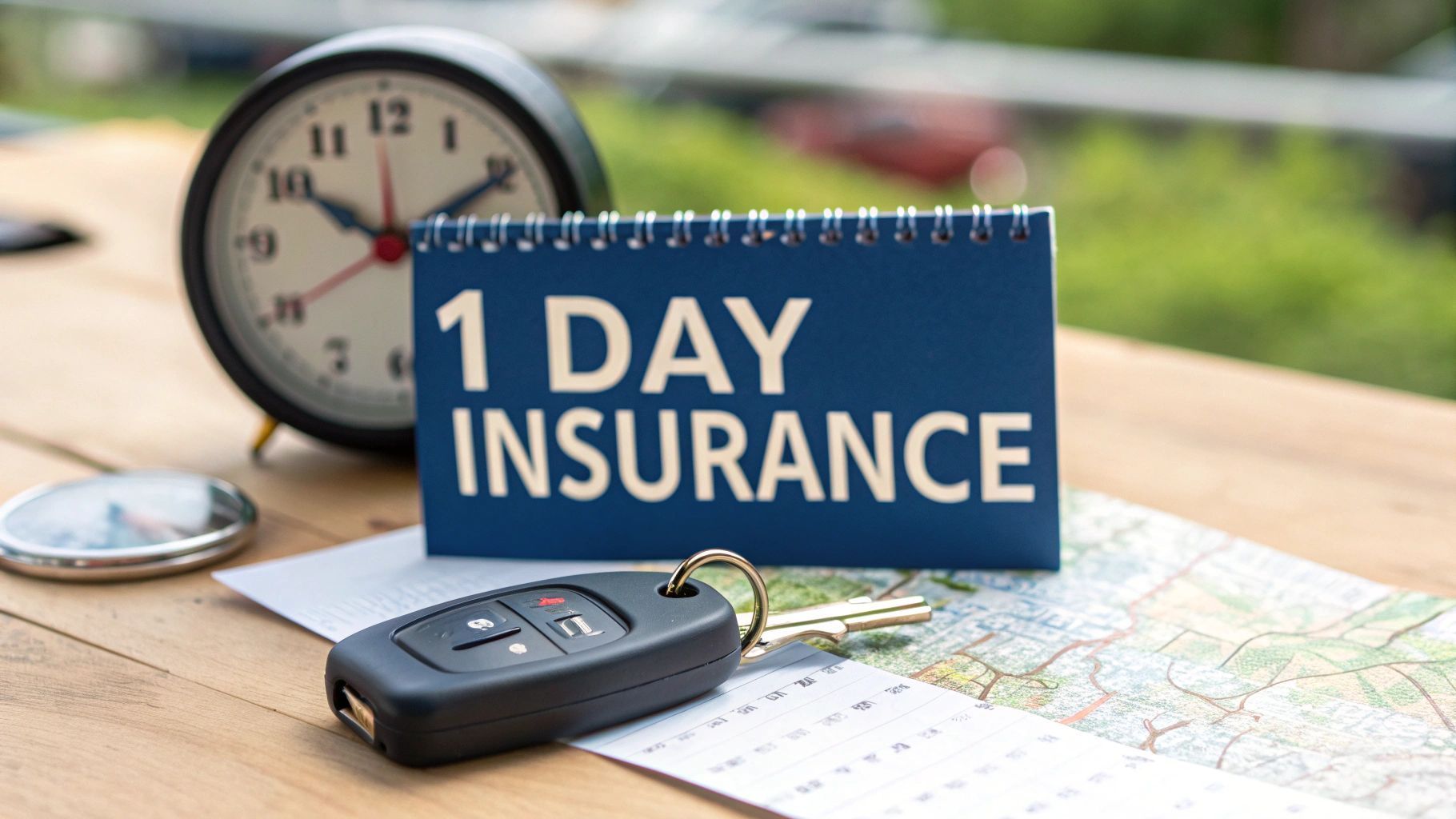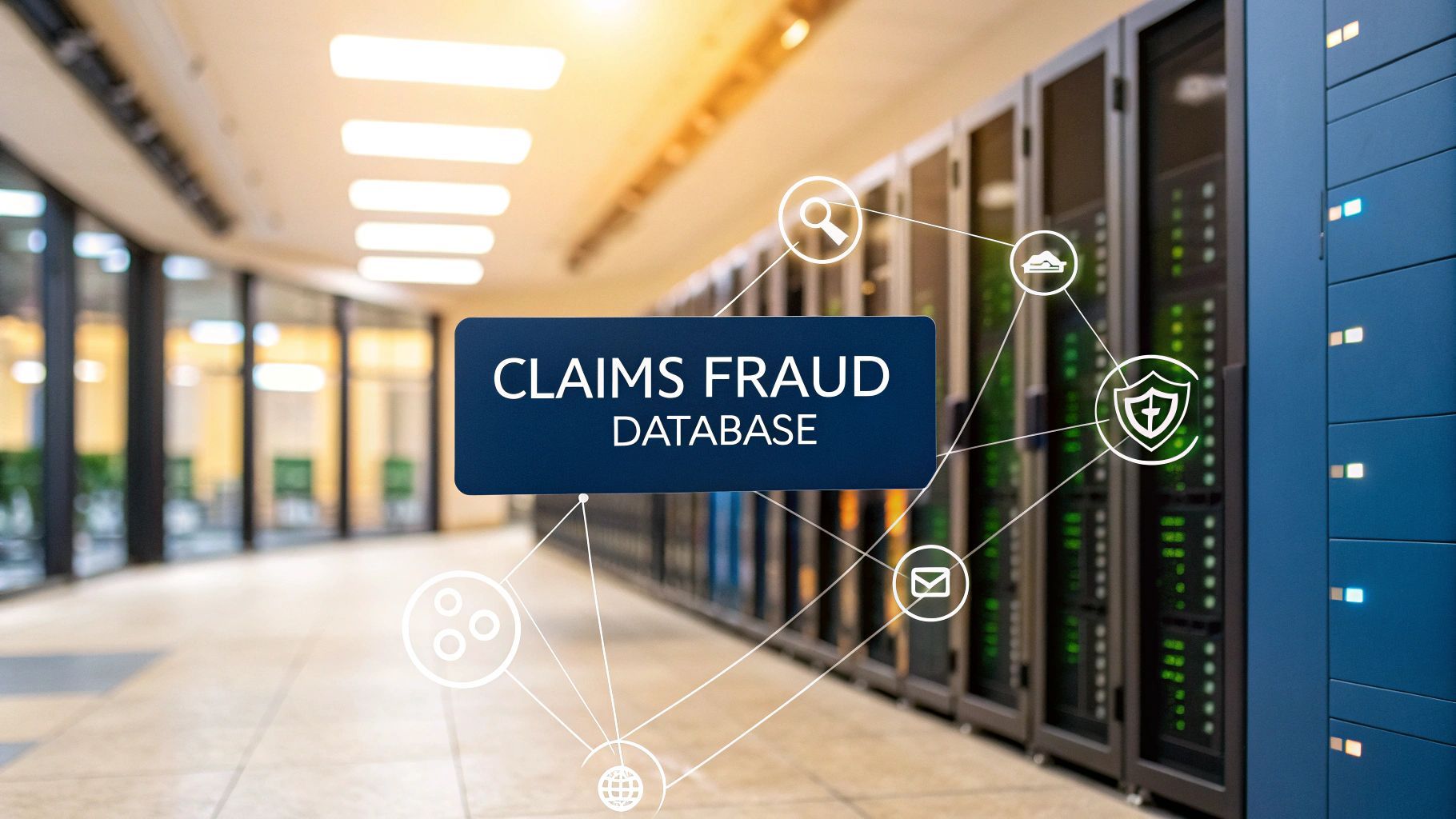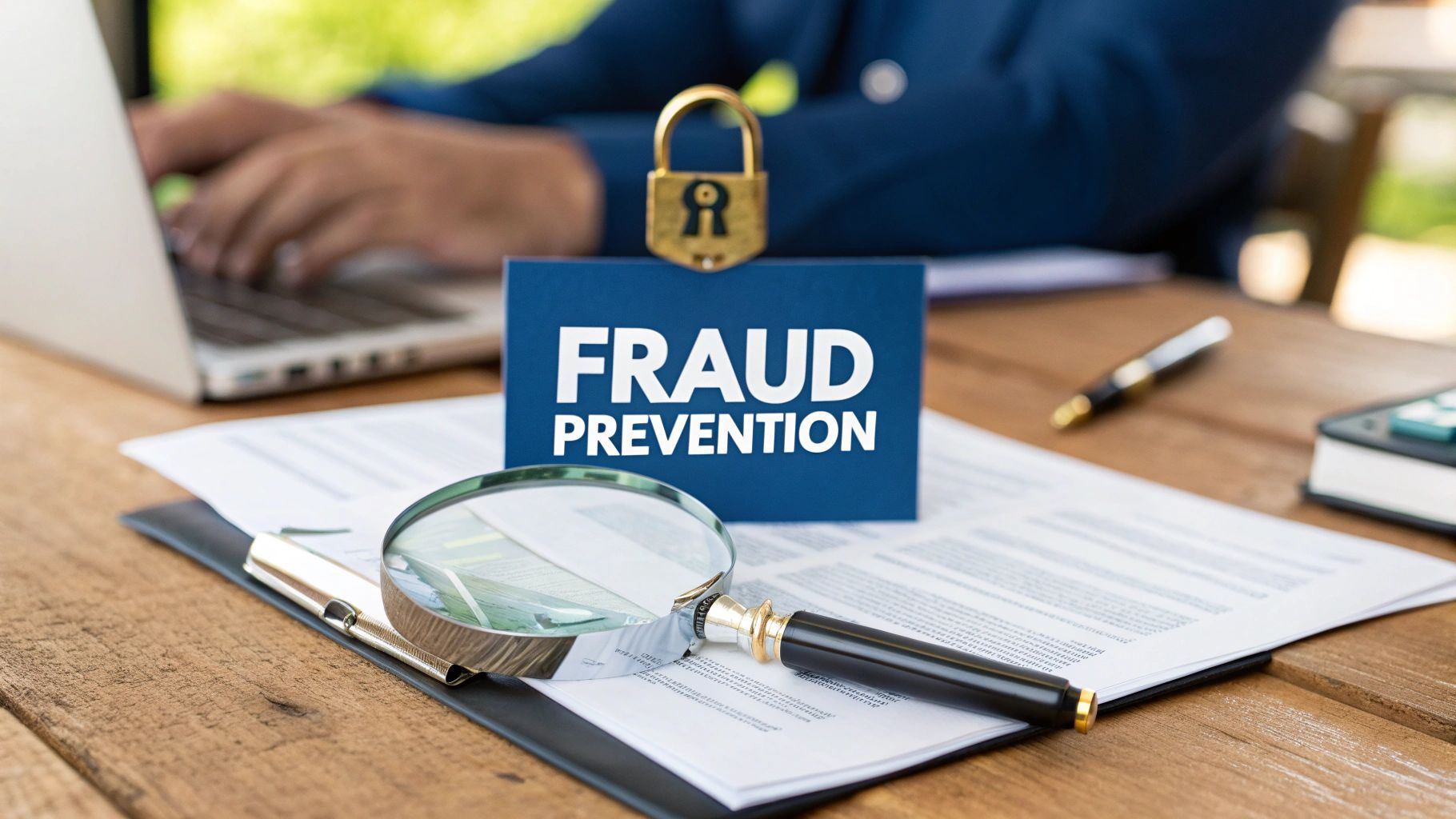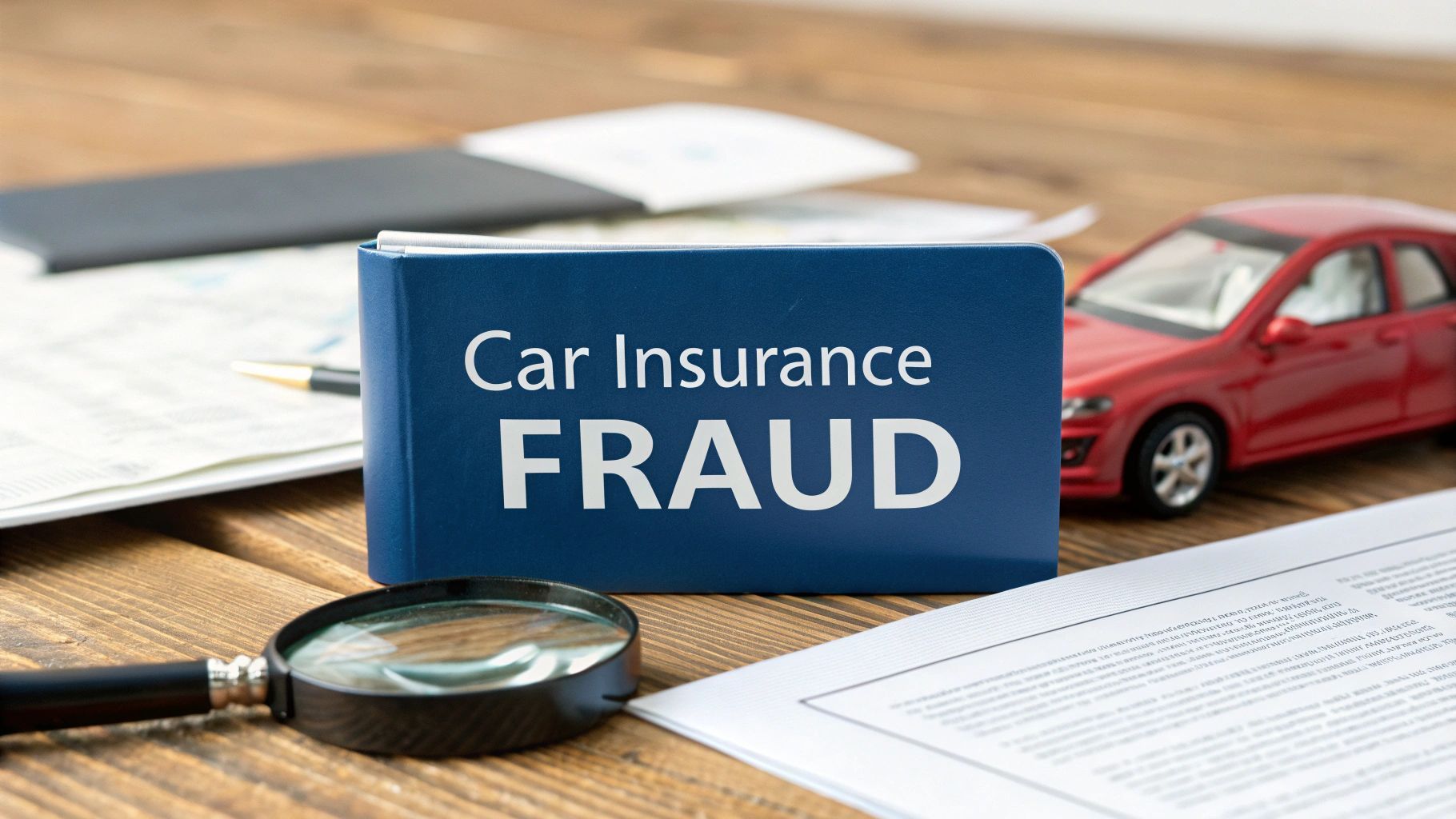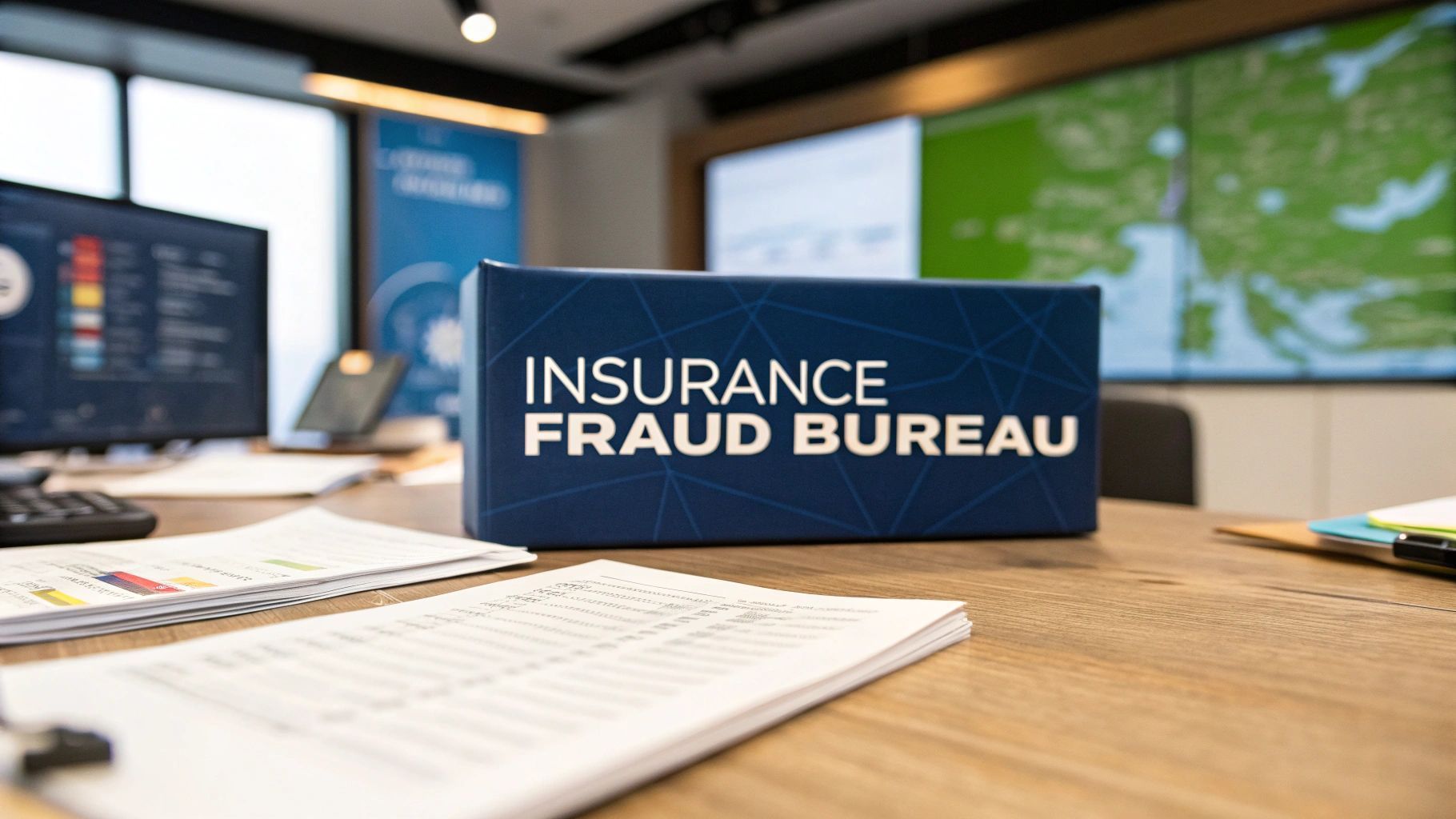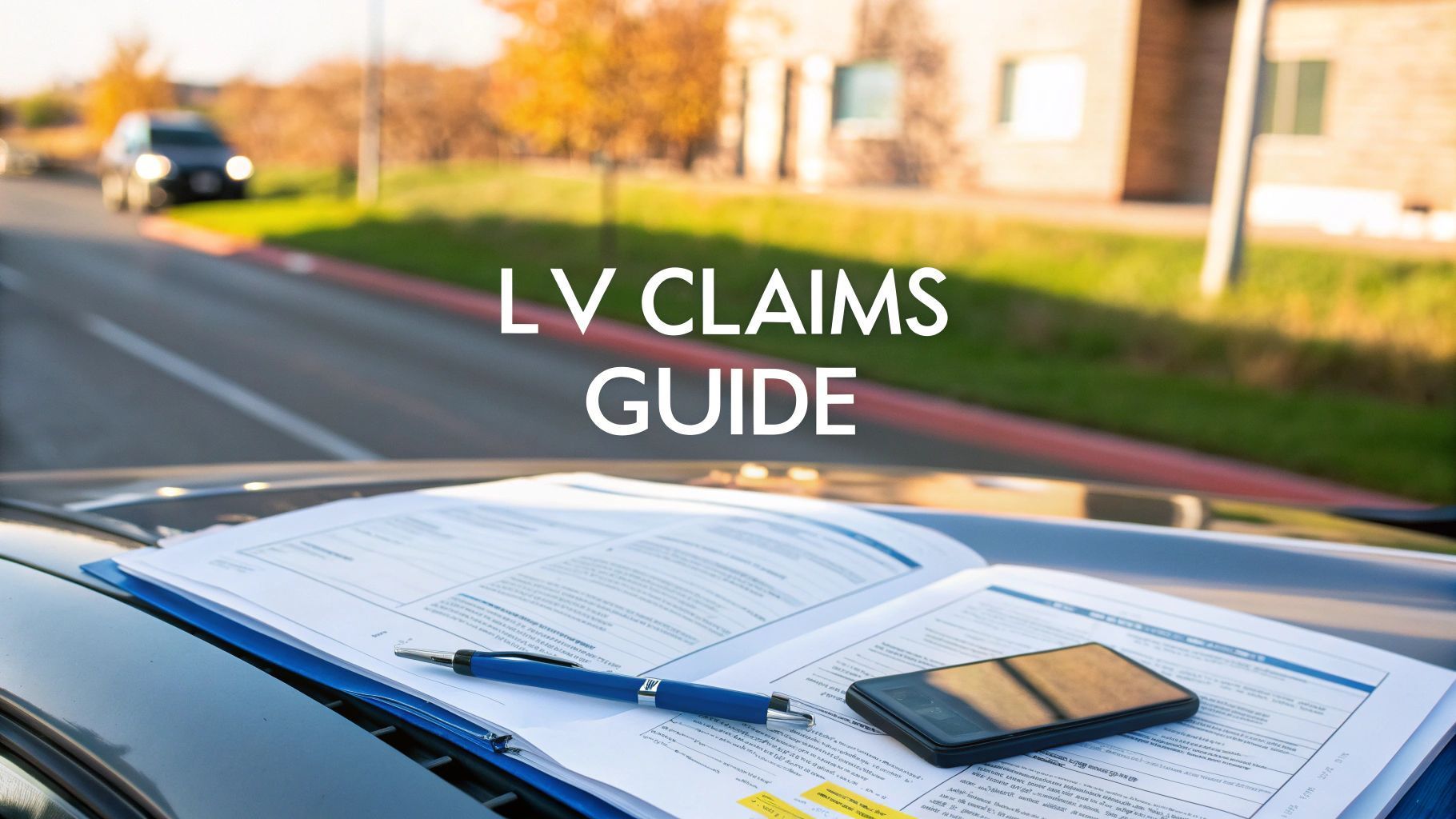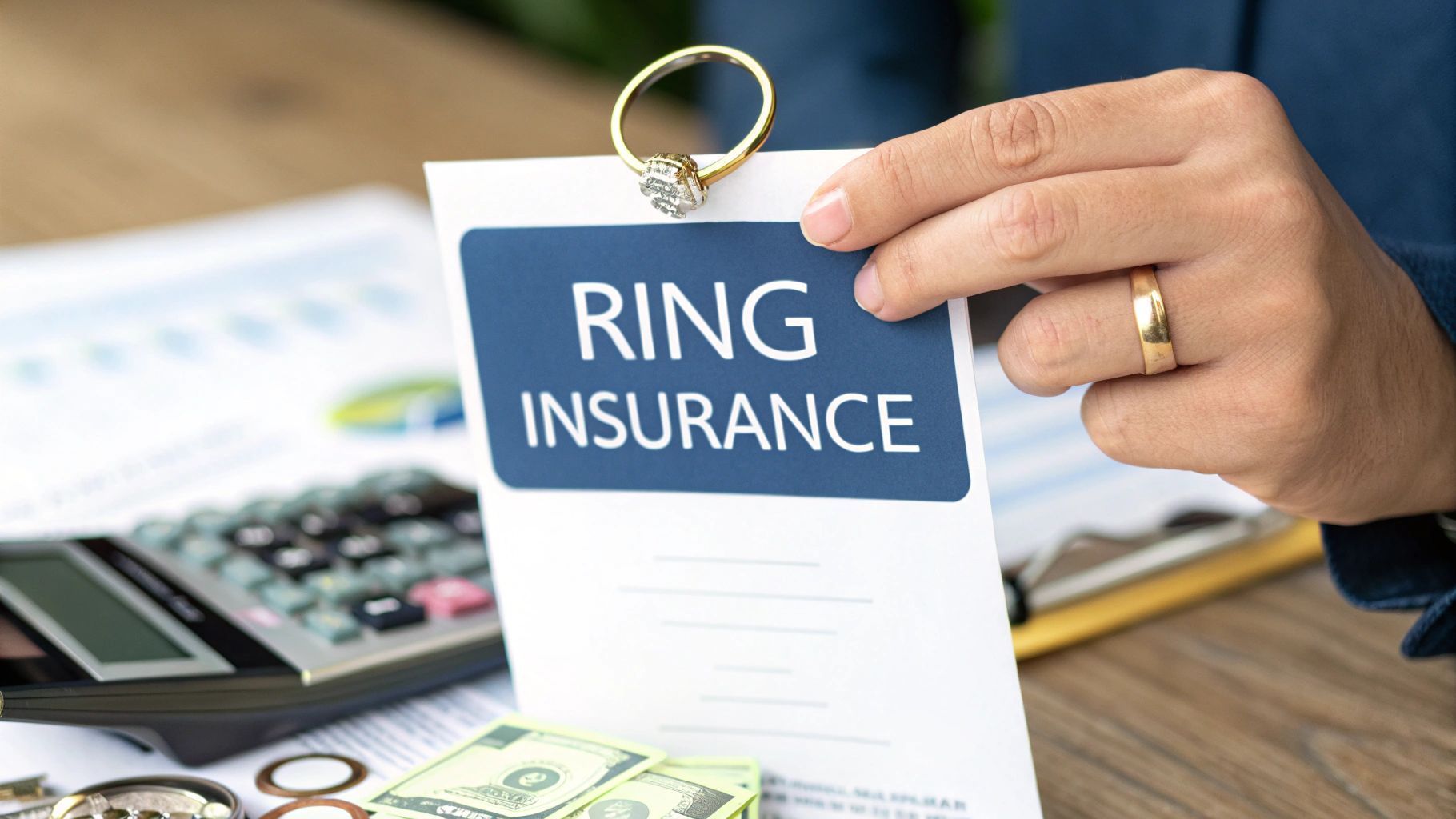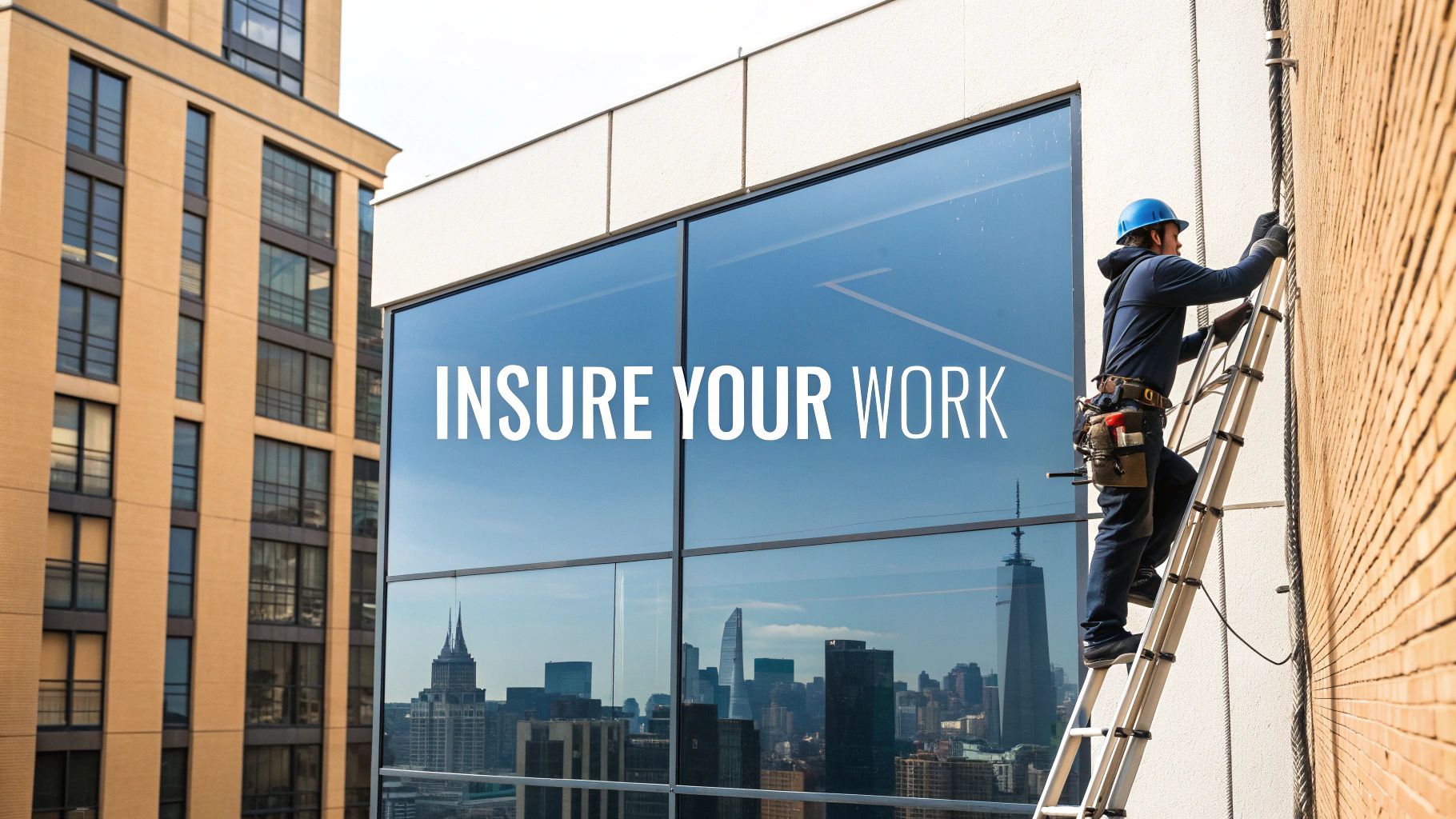Insurance Public Liability UK: Complete Guide to Coverage
Public liability insurance is one of those things you hope you’ll never need but you’ll be incredibly glad you have it if you do. Think of it as your business's financial safety net. It’s designed to catch you if your work accidentally causes an injury to a member of the public or damages their property.
While it’s not always a legal requirement, for any business that deals with people it's an absolute must-have.
The Real Purpose of Public Liability Insurance

Let’s get practical. Imagine a customer slips on a freshly mopped floor in your shop. Or picture one of your team accidentally dropping a tool and cracking a client’s expensive marble flooring. These things happen.
Without public liability insurance , the cost of defending yourself against a claim—not to mention any compensation you have to pay out—would come straight from your business's bank account. For many small businesses, one significant claim could be enough to shut the doors for good.
This is where your policy springs into action. It handles the legal defence and covers the settlement costs, right up to your policy limit. It’s genuine peace of mind, letting you get on with running your business without constantly worrying that a simple accident could spiral into a costly legal nightmare.
Provability and the Cost of Fraud
Now, a critical part of any claim is that it has to be provable. Insurers do not just hand out money when someone makes an accusation. They investigate every single incident to ensure it is legitimate and to weed out fraud.
When a claim is made against you, the person making it has to prove that your business was actually negligent and that this negligence was the direct cause of their injury or loss. The burden of proof is on them.
This verification process is absolutely vital because fraudulent claims are not a victimless crime. They hit the entire industry—and its honest customers—hard. Insurance fraud is a major problem that costs the industry billions and ultimately drives up the cost of premiums for every honest business owner.
When insurers pay out on false claims, those losses are passed on to all policyholders through higher annual fees. This means that your premium is higher because of the dishonesty of others.
Put simply, every fabricated "slip and trip" claim makes the system more expensive for everyone else. By fighting fraud and focusing only on provable incidents, the industry works to keep public liability insurance affordable and accessible for the businesses that genuinely need its protection. It is about protecting not just the insurer but the whole business community.
Who Really Needs Public Liability Cover?
If your business interacts with the public in any way—whether that’s customers visiting your premises or you working in their homes—you should seriously consider public liability cover. It is a common misconception that this insurance is only for high-risk trades. The reality is, a simple, unexpected accident can happen in any line of work, leading to a claim that could cripple your business financially.
Think about it. A plumber working in a client's home accidentally drops a wrench, cracking an expensive floor tile. Or a customer in your café slips on a freshly mopped floor that was not properly signposted. These are the kinds of everyday mishaps that public liability insurance is built for. It is there to shield your business from the legal fallout and compensation costs that follow.
More Than Just a Good Idea
In many cases, this cover is not just a smart move; it is a requirement. Commercial landlords often make it a condition of the lease that their tenants have public liability insurance. Similarly, many companies and public sector bodies will not even consider awarding you a contract unless you can prove you have adequate cover in place.
This makes it an essential tool for growth. Without it, you could find yourself locked out of fantastic opportunities or unable to secure the very premises you need to trade from. The need for this protection is often built right into the contracts that help your business thrive, making it a cornerstone of any professional, sustainable https://www.proova.com/business.
For anyone venturing into a new field, getting to grips with liability is vital. Take, for example, entrepreneurs starting an estate sale business —the risks tied to public interaction and handling valuable client property are enormous.
You only need to look at related mandatory covers, like employers' liability, to see how quickly things can go wrong. With 44,547 new claims registered from over two million workplace incidents, the potential for claims is substantial. These figures show just how easily an incident can escalate into costly legal action.
So, whether you run a shop, visit clients at their offices, or organise events, you need to assess your risk. If there is any chance a member of the public could be injured or have their property damaged because of your business activities, you need this cover. It is as simple as that.
Decoding Your Policy: What Is and Isn’t Covered
Getting to grips with the small print of any insurance policy can feel like a chore but for public liability it is absolutely essential. At its core, this insurance is your financial backstop if your business activities cause an injury to a member of the public or damage their property. Think slips, falls, or accidental damage caused by you or your team while on the job.
A key term you will come across is the 'level of indemnity'. This is simply the maximum amount your insurer will pay out for a single claim. Common levels range from £1 million to £10 million but the right amount is not just a guessing game. It depends entirely on your industry, your daily risk exposure, and what your clients contractually require. A small local shop might be perfectly fine with £2 million cover, whereas a construction firm on a major project will almost certainly need £10 million or more.
The image below gives a good visual sense of how to weigh up your coverage needs.
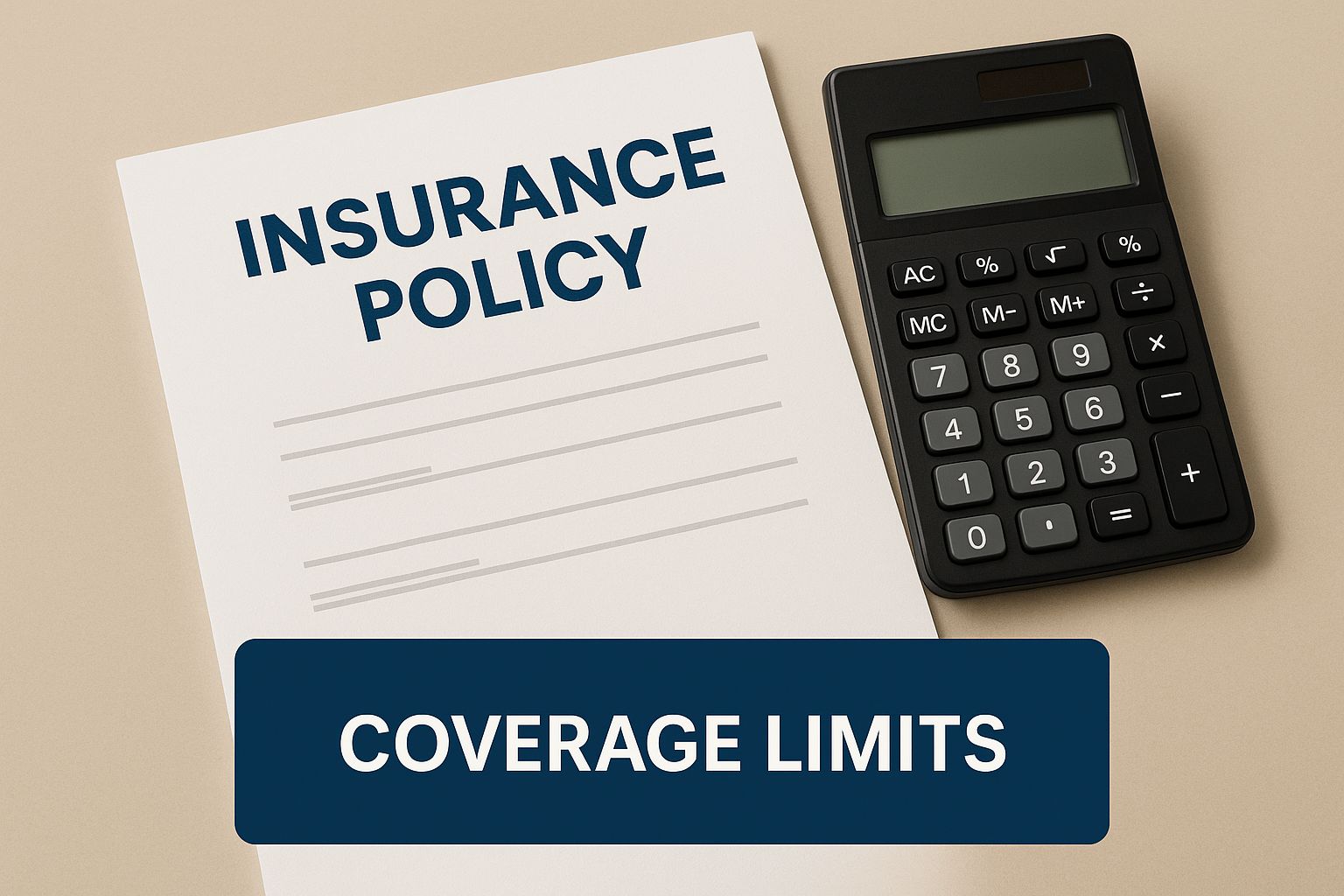
Ultimately, choosing your indemnity level is about striking the right balance between the real-world risks you face and the professional standards your clients expect.
What Your Policy Typically Covers (and Excludes)
It is just as important to understand what is not covered. Public liability insurance is designed specifically for third-party claims – meaning members of the public. It will not cover every single thing that could go wrong in your business. Knowing these boundaries is crucial for spotting where you might need other types of business insurance.
To make this clearer, let's break down what you can generally expect to be included versus what is almost always excluded.
Public Liability Coverage Inclusions vs Exclusions
| Coverage Aspect | Typically Included | Typically Excluded |
|---|---|---|
| Bodily Injury | Injuries to customers, clients, or members of the public caused by your business operations. | Injuries to your own employees. |
| Property Damage | Damage to a third party's property (e.g., a customer's laptop or a venue's flooring). | Damage to your own business property, stock, or equipment. |
| Legal Costs | Legal fees and expenses for defending a claim made against you. | Fines or penalties from regulatory bodies. |
| Professional Advice | - | Financial loss to a client resulting from poor advice or a professional error. |
| Vehicle Use | Accidents on your premises (e.g., a slip in your car park). | Accidents involving business vehicles on public roads. |
| Product Issues | Injury or damage caused by a faulty product you have supplied. | The cost of recalling or replacing the faulty product itself. |
This table shows why public liability is a cornerstone of business protection but not the entire building. It is designed for a specific purpose and mistaking it for a catch-all policy can leave you dangerously exposed in other areas.
Public liability insurance is specific; it is not a safety net for every business risk. Understanding its limits is the key to building truly comprehensive protection.
To put it another way, here are the common risks that fall outside a standard public liability policy:
- Employee Injuries: If one of your own staff gets hurt at work, that is a job for Employers’ Liability Insurance . In the UK, this is a legal requirement for most businesses with employees.
- Professional Mistakes: Gave some bad advice that cost a client money? That is what Professional Indemnity Insurance is for. It covers financial loss due to professional negligence.
- Vehicle Incidents: Any accidents involving your company cars or vans on the road need to be covered by your commercial motor insurance , not public liability.
- Your Own Property: If your own office, tools, or stock get damaged, you will need a commercial property or contents insurance policy to cover the costs.
Recognising these distinctions is the first step toward building a complete insurance shield. By layering the right policies, you can protect your business from all angles without leaving any dangerous gaps in your cover.
The True Cost of Public Liability Fraud
While the vast majority of claims are completely legitimate, the shadow of insurance fraud looms large over the industry. This is not just about sophisticated criminal gangs staging elaborate accidents. More often than not, it is a case of opportunistic exaggeration—where a genuine, minor incident gets blown way out of proportion.
These fraudulent activities can be as simple as 'slip and trip' claims where injuries are invented or overstated or they can be more calculated scams designed to game the system. Each suspect claim forces insurers to launch a rigorous investigation. Their job is to establish the provability of every incident, which involves careful evidence gathering to sort genuine accidents from deliberate deception.
Not a Victimless Crime
It is a dangerous myth that insurance fraud is a victimless crime that only hurts big, faceless corporations. In reality, every single fraudulent payout adds to a massive financial weight that is shouldered by all honest policyholders. When insurers are forced to cover dishonest claims, they have to make up for those losses somewhere.
The most direct consequence? An increase in insurance public liability premiums for everyone. That's right—your annual costs go up to pay for someone else’s dishonesty.
The ripple effect of fraud is huge. It drains insurer resources that should be going towards settling genuine claims quickly and efficiently. Instead of focusing on helping honest businesses get back on their feet after a real accident, time and money are poured into fighting fraud.
This diversion of resources gums up the works for everyone, slowing down the entire claims process and pushing costs up for all of us. You can read more about what insurance fraud really costs the industry to grasp the true scale of the problem.
The Consequences of Being Caught
Trying to defraud an insurer is a high-stakes gamble with severe penalties. It is far from an easy payday and anyone caught faces serious legal trouble.
The fallout can include:
- Criminal prosecution that could lead to hefty fines or even prison time.
- A permanent record of insurance fraud, making it incredibly difficult and expensive to get cover in the future.
- Repayment of any funds obtained through the fraud, often with significant legal costs piled on top.
Honesty is not just an ethical suggestion during the claims process; it is a legal requirement. The system is built to protect both the person making the claim and the business they are claiming against but it all hinges on good faith from everyone involved.
How to Handle a Claim Made Against Your Business

There's no sugarcoating it: facing a liability claim is incredibly stressful. The first rule in this situation is simple but absolute: do not admit liability .
Do not offer to pay for damages and avoid apologies that could be misinterpreted as an admission of guilt. It is vital to stay professional and completely neutral.
Your immediate priority is to become a meticulous record-keeper. You need to gather as much evidence as you can, right there at the scene. This means taking clear photos from every possible angle, saving any CCTV footage, and collecting the names and contact details of anyone who witnessed the incident.
Once you have gathered the initial evidence, the next step is crucial: contact your insurer as soon as you possibly can. Any delay could put you in breach of your policy's terms, so swift action is non-negotiable.
Your Insurer Takes Control
After you report the incident, your public liability insurance provider takes the reins. This is the moment your policy really starts working for you. They will bring in the experts—solicitors, loss adjusters, and any other professionals needed to manage the claim on your behalf.
From this point forward, direct all communication from the claimant or their representatives straight to your insurer. This creates a protective buffer, stopping you from saying or doing anything that could weaken your position. Your insurer's team will handle all negotiations, investigate whether the claim is valid, and manage any potential settlement.
Your job now is to cooperate fully with your insurer and provide any information they need. They have the expertise to navigate the complexities of liability claims, ensuring your interests are protected while keeping you compliant with your policy.
It is also worth understanding the claims process from the inside, as insurers can sometimes dispute a claim for specific reasons. You can learn more about why an insurance company might refuse to pay a claim and what your options are.
Of course, fantastic customer service can often prevent disputes from escalating in the first place. For instance, knowing how to effectively handle customer complaints can resolve minor issues long before they turn into a legal headache. Following these steps will give you the confidence to manage a tough situation the right way.
Your Public liability Insurance Questions Answered
When you're running a business, insurance can feel like a maze of jargon and confusing terms. To cut through the noise, we have tackled some of the most common questions business owners ask about public liability insurance. Getting your head around these points is the first step to making a smart decision for your business.
Think of getting the right policy as more than just a box-ticking exercise. It is about protecting your hard work, your reputation, and your future.
Is Public liability Insurance a Legal Requirement in the UK?
This is a big point of confusion for many, so let's clear it up: for most businesses, public liability insurance is not a legal requirement. It is often mistaken for employers' liability insurance, which is mandatory the moment you hire even one person.
But here is the catch. Just because it is not legally compulsory does not mean you can afford to skip it. Many clients, especially big companies and local authorities, will not even consider working with you unless you can show them you are covered. It has become a commercial necessity for winning contracts and is often a non-negotiable part of signing a lease on business premises.
How Much Public liability Cover Do I Need?
There is no magic number here. The amount of cover you need—often called the 'level of indemnity'—is completely unique to your business. It all comes down to the kind of work you do, the level of risk involved, and any specific demands from your clients.
A freelance writer visiting quiet office spaces might find £1 million of cover is plenty. On the other hand, a construction company working on a busy public site faces much higher risks of serious injury or property damage, so they might be required to have £10 million or even more. The golden rule? Always read your client contracts carefully, as they will often tell you the minimum cover you need to have in place.
Choosing the right amount of public liability insurance is a balancing act. If you underinsure, you could be left with a devastating bill if a major claim hits. But if you over-insure, you are just throwing money away on protection you do not really need.
What Is the Difference Between Public liability and Professional Indemnity Insurance?
It is easy to get these two mixed up but they cover completely different types of risk. Understanding the distinction is vital.
-
Public liability Insurance: Think of this as your "oops" cover for physical accidents. It protects you if your business activities cause injury to a member of the public or damage their property. A classic example is a customer tripping over a cable in your shop.
-
Professional Indemnity Insurance: This is all about the quality of your work. It covers claims for financial loss that a client suffers because of your negligent advice, poor service, or faulty designs. It protects you from the consequences of a professional mistake.
If you are in a business that offers advice or skilled services—like a consultant, architect, or designer—you will almost certainly need both policies to be properly protected.
Can I Get Public liability Insurance for a One-Day Event?
Yes, you certainly can. Insurers know that not everyone needs a full year of cover, so they offer short-term or one-off policies perfect for events like markets, festivals, or exhibitions.
This kind of cover gives you the protection you need for the exact duration of your event, so you do not have to pay for an annual policy when you only need it for a single day. It is a really flexible and cost-effective solution for event organisers and stallholders.
At Proova , we simplify the claims process by making it easy to document and verify your assets before a loss ever occurs. This ensures that when you do need to make a claim, the process is faster, clearer and less stressful. Protect your business with a clear record of your assets. Learn more at Proova.


